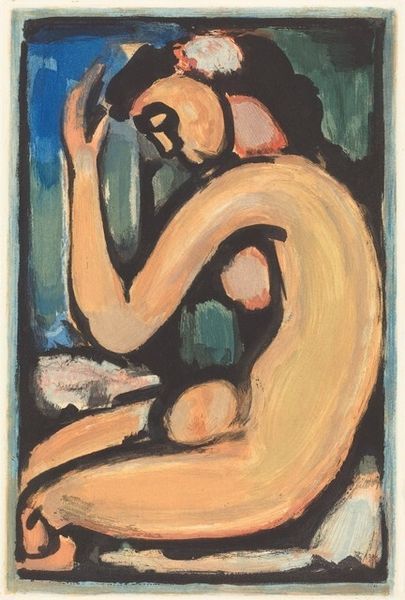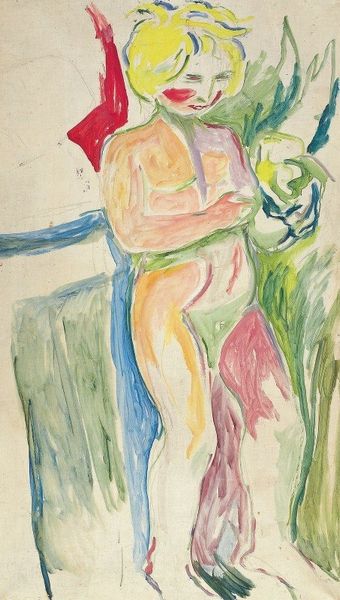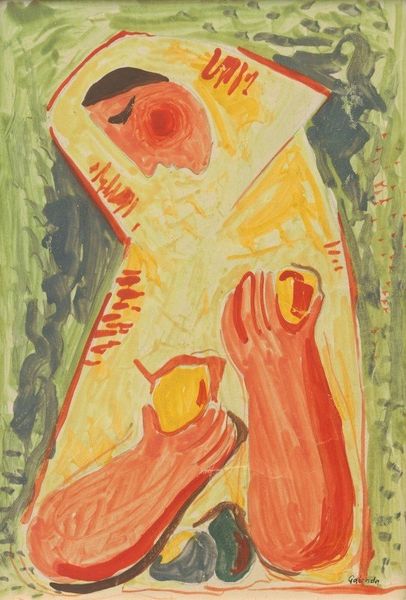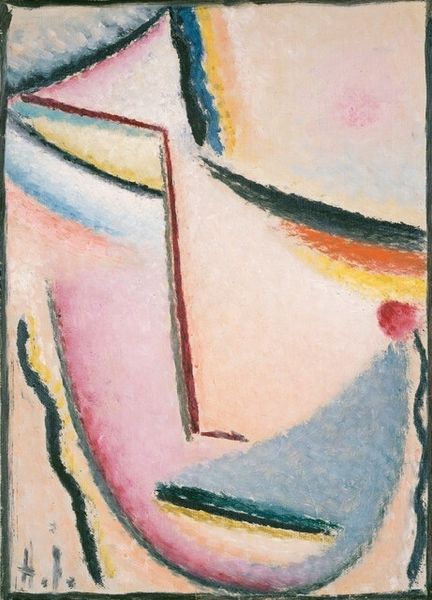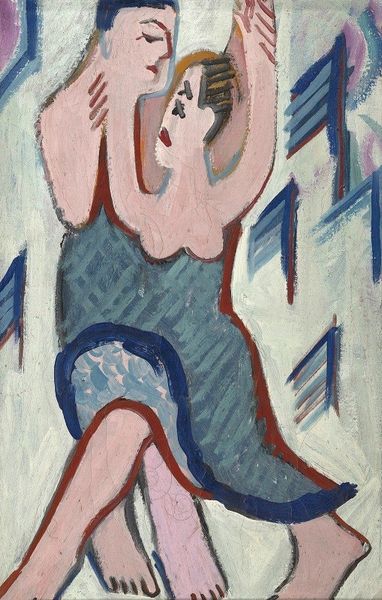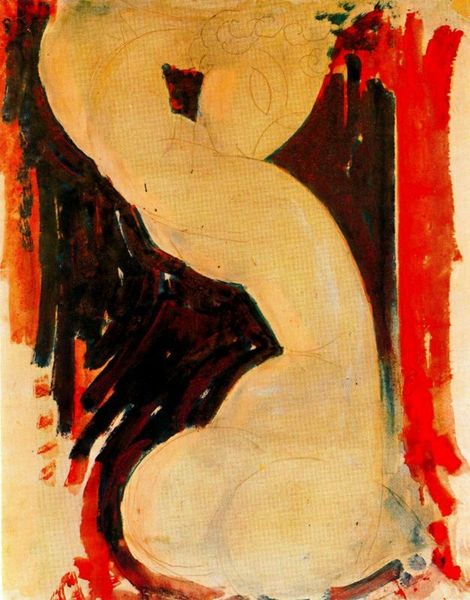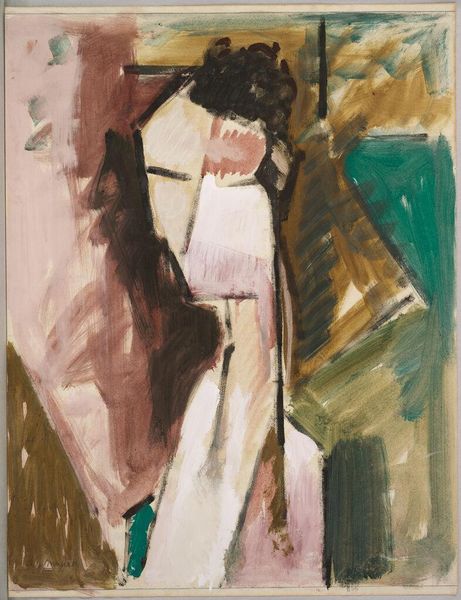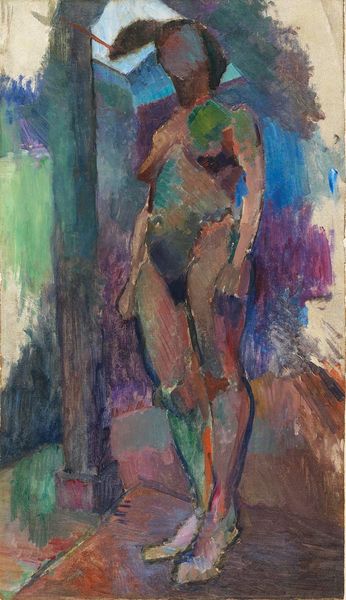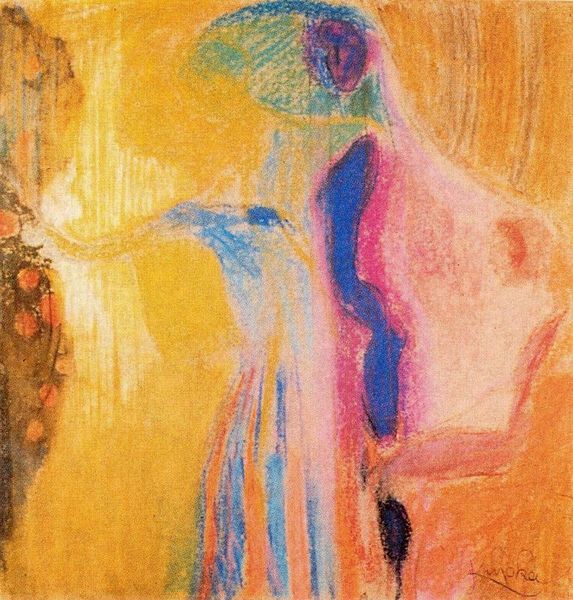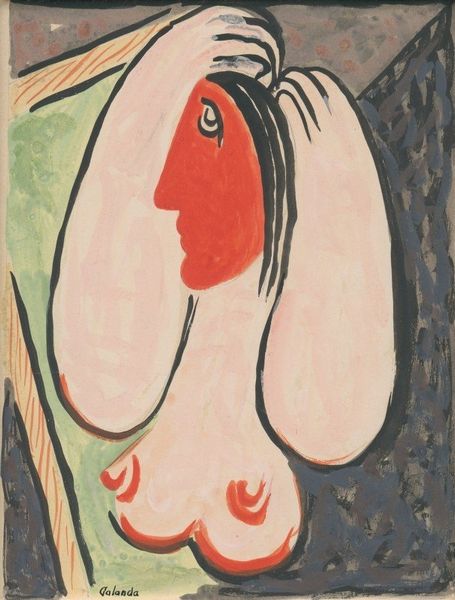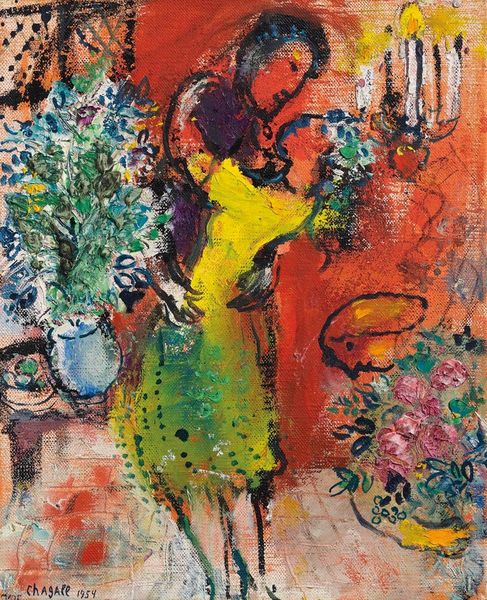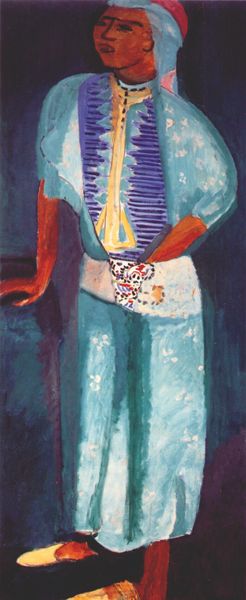
drawing, painting, paper, watercolor
#
portrait
#
drawing
#
painting
#
figuration
#
paper
#
abstract
#
watercolor
#
abstraction
#
watercolour illustration
#
modernism
#
watercolor
Copyright: Public Domain: Artvee
Curator: Mikuláš Galanda’s "Woman with a Vase," dating to 1938, presents us with a fascinating intersection of figuration and abstraction, executed in watercolor on paper. It's quite evocative, don't you think? Editor: Absolutely. The first thing that strikes me is the palette—the predominance of pink, contrasting with the bright green and yellow vase, it’s almost dreamlike, suspended. Curator: The application of watercolor here seems crucial. Notice how Galanda utilizes the paper itself, allowing it to breathe through the washes. This isn't merely representational, it’s about exploring the possibilities of the medium and exposing the material processes of its making. We might consider its relationship to artisanal craft traditions… Editor: I see your point about the process, definitely. Though, for me, it stirs a sense of intimacy, this woman cradling the vase. It makes me think of private rituals, tending to something precious and fragile. The colors are heightened but almost faded at the same time. It gives a strange atmosphere to it, something to protect. Curator: Right, the motif of a vessel recurs across visual art and material culture generally, doesn't it? Often associated with nurturing or…containment. However, look at how Galanda flattens the form, almost reducing it to its geometric components. There’s a real tension there between representation and abstraction, between evoking sentiment and subverting it. And also the modernist pursuit for exposing art processes of creation and challenging what constitutes craft vs fine arts. Editor: Yes, it's that very tension that holds my gaze! The way she's drawn, she could be anyone, any woman anywhere—yet, the vibrant colors inject a dose of hyperrealism. The simplification, to basic shapes, leaves enough space for imagination. It reminds us, also, that things can be real without every detail fleshed out. The simplicity enhances the symbolism, and maybe universality. Curator: Indeed, these stylistic choices must be read in the context of early modernist experiments in challenging accepted representational conventions. Consider too the political environment: this work was created on the eve of World War II, amid considerable socio-political turbulence. Such visual strategies might thus signal something of the era’s fractured realities and the need to find a fresh visual language, to reframe both form and feeling. Editor: Absolutely. When I look at this painting, I feel that it is talking about fragility in several forms—objects, human connection, stability. In a chaotic, pre-war Europe, that quiet moment by the vase is a rebellion of the heart, which I believe is true of beauty, that also holds us and rebels, both at once. Curator: Beautifully put! A fascinating interplay of artistic ingenuity and historical resonance… Editor: Yes, truly inspiring the meeting between inner landscape and outer realities.
Comments
No comments
Be the first to comment and join the conversation on the ultimate creative platform.
